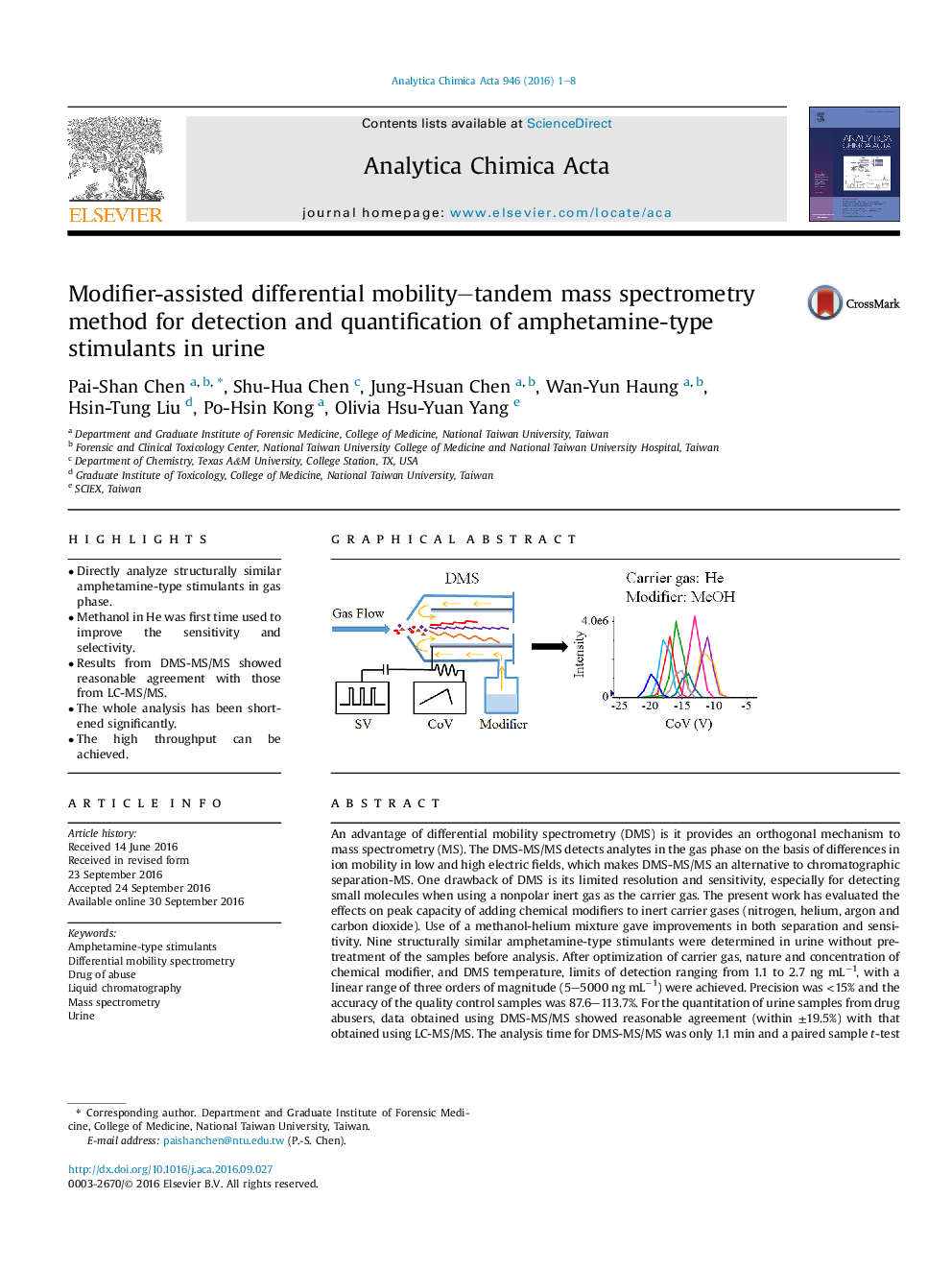| کد مقاله | کد نشریه | سال انتشار | مقاله انگلیسی | نسخه تمام متن |
|---|---|---|---|---|
| 5131329 | 1490886 | 2016 | 8 صفحه PDF | دانلود رایگان |
- Directly analyze structurally similar amphetamine-type stimulants in gas phase.
- Methanol in He was first time used to improve the sensitivity and selectivity.
- Results from DMS-MS/MS showed reasonable agreement with those from LC-MS/MS.
- The whole analysis has been shortened significantly.
- The high throughput can be achieved.
An advantage of differential mobility spectrometry (DMS) is it provides an orthogonal mechanism to mass spectrometry (MS). The DMS-MS/MS detects analytes in the gas phase on the basis of differences in ion mobility in low and high electric fields, which makes DMS-MS/MS an alternative to chromatographic separation-MS. One drawback of DMS is its limited resolution and sensitivity, especially for detecting small molecules when using a nonpolar inert gas as the carrier gas. The present work has evaluated the effects on peak capacity of adding chemical modifiers to inert carrier gases (nitrogen, helium, argon and carbon dioxide). Use of a methanol-helium mixture gave improvements in both separation and sensitivity. Nine structurally similar amphetamine-type stimulants were determined in urine without pretreatment of the samples before analysis. After optimization of carrier gas, nature and concentration of chemical modifier, and DMS temperature, limits of detection ranging from 1.1 to 2.7 ng mLâ1, with a linear range of three orders of magnitude (5-5000 ng mLâ1) were achieved. Precision was <15% and the accuracy of the quality control samples was 87.6-113.7%. For the quantitation of urine samples from drug abusers, data obtained using DMS-MS/MS showed reasonable agreement (within ±19.5%) with that obtained using LC-MS/MS. The analysis time for DMS-MS/MS was only 1.1 min and a paired sample t-test between the two methods gave a p-value of 0.0894, which indicates that DMS-MS/MS is a reliable method, with comparable precision and sensitivity to LC-MS/MS.
244
Journal: Analytica Chimica Acta - Volume 946, 23 November 2016, Pages 1-8
